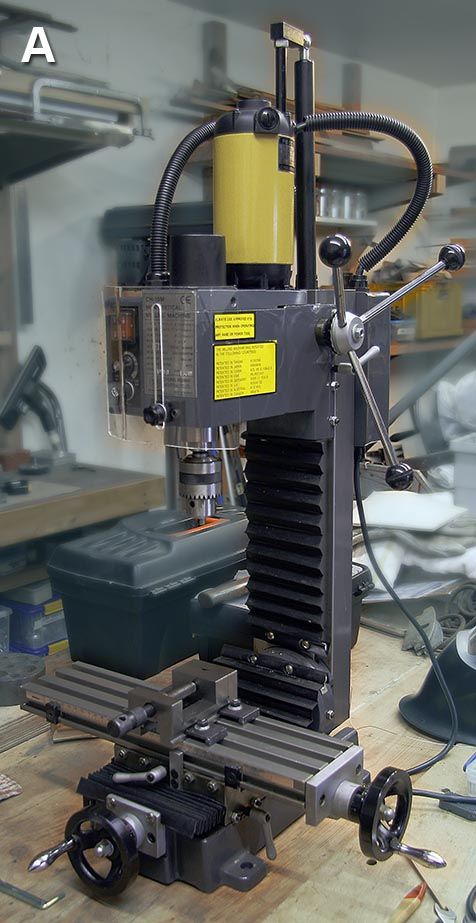Well, I finally got around to disassembling the old mill to see the damage to the gear teeth. Big Ouch! The gears are the plastic acetal kind and didn't take it so kindly when that end mill fetched up on my work-piece. The low-end gears are properly borked: having shed some teeth on the shiftable, intermediate gear as well as the on the main spindle gear.
So far, I've only removed the intermediate gear (12/20 tooth), but it appears to be identical in count and measurement to that for the old Sieg X2 mini mill. Too, it appears that replacement gears are still offered by such places as AET.
…however…
I'm not exactly sure that it is really worth my time and effort to replace the gears on this old mill. Although the CH-10M is more or less the same as the Sieg X2 it has the disadvantage of having aluminum castings, aluminum column and an aluminum table. So if I put in new gears (even the stronger metal versions), even if I put in better main spindle bearings, the mill will still have its basic lack of rigidity as compared to the newer (old) version.
By the way, I happened upon that article by Neil Wyatt, "Improvements to an X2 Mill". (Hats off to you, Neil. You're a prince!) The article explains the mysteries of disassembly very, very well. Nevertheless, I see it is anything but a simple wave-of-the-hand, drop-in exchange.
…so even IF I had the parts in hand – for free – the work hours themselves – along with the preparation – are not inconsiderable. Might just button it up and use it high-end only until I've decided on which larger mill to purchase.
Oh, and a last amusing note:
I don't know this for sure, but I really suspect that this is not the first time this thing has some shed gear teeth and been repaired. I'm making this assumption from the fact that the label across the motor plate was cut through and the top spacer on the spindle – the one with the spindle locking hole – had been inserted upside down so that locking the spindle was kind of… impossible.
Anyway, when I opened up the unit I found it absolutely – and I do mean absolutely – filled up with lithium grease. I dug out something like a soft drink can's worth of the stuff before I could even see anything inside.
I figure that one of the first owners also lost some gear teeth, went through the trouble of replacing them and was so panicked about it happening again that he kind of overdid the lubrication in supposed self-defense.
So now I know why the bearings were always dripping grease when it was running. 
Or it could be normal (???). What do I know. 
Anyway, feel free to comment or suggest.
Cheers!
Ignatz.





